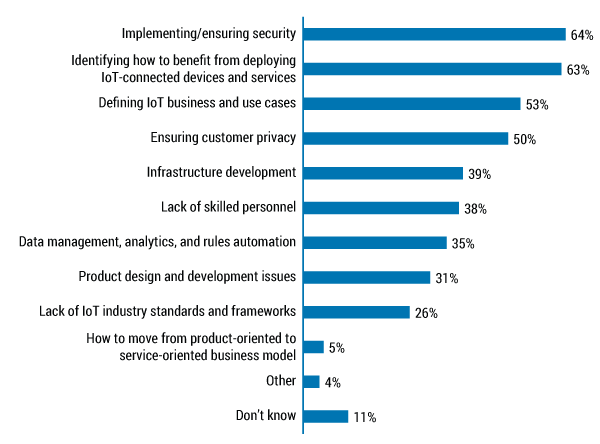NOVEMBER 3, 2015 — ARLINGTON, MASSACHUSETTS

"Security is paramount when it comes to IoT initiatives; the more objects a company connects, the more it opens itself up to possible attack," according to Curt Hall. He asserts that "Frequent reports of attacks on a range of businesses and industrial facilities by security agencies like the NSA, and Chinese, Russian, and criminal hackers — with the intention of conducting commercial and industrial espionage — are forcing many organizations to think long and hard about the possibility of actually ensuring the security of IoT offerings and applications. This is evident in the answers to a follow-on question we asked organizations regarding whether or not they thought that today’s security technologies and practices could be successfully adapted to support IoT-connected solutions. ... the majority of those surveyed believe that the IoT requires some new form of security model and practices if it is to achieve widespread adoption by mainstream organizations."
According to Hall, "These findings strongly suggest that vendors offering IoT-connected products and solutions — as well as those implementing them within their respective organizations — are going to have to get far more serious about security once they start marketing/deploying connected solutions. Security providers are also going to have to come up with new technologies and practices. This includes implementing better threat detection and prevention technologies and practices within the devices themselves and within the networks and platforms for managing them. Let’s hope the new security offerings coming onto the market that are designed to apply machine learning (ML) and other big data analysis techniques to threat detection and prevention will help."
* Excerpted from "The Internet of Things, Part II: Benefits, Drivers, and Impediments," (![]() ) Data Analytics & Digital Technologies Executive Update Vol. 15 No. 19
) Data Analytics & Digital Technologies Executive Update Vol. 15 No. 19

